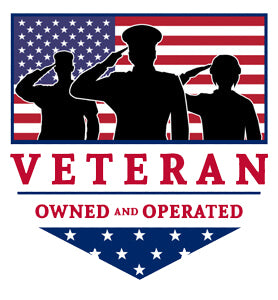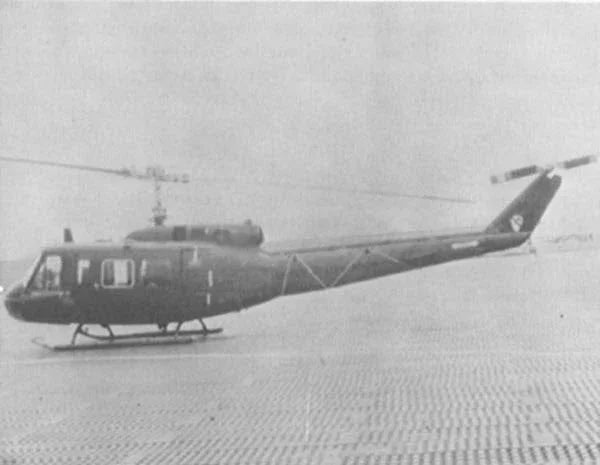The Battle of Kham Duc
Ngo Dinh Diem was a South Vietnamese politician who was the last prime minister of the State of Vietnam from 1954 to 1955 after which he became the first president of the Republic of Vietnam from 1955 until his assassination in 1963.,
During his time in office one of his hobbies was to hunt big game like tigers in Kham Duc, an isolated six km long by two km wide vally ringed by 2,000 feet high, steep, jungle covered mountains.
Kham Duc was located in the Central Highlands of Vietnam just east of the Laotian border. Diem had a 4,800 foot long airstrip constucted there for his presidential aircraft to compliment his hundting lodge.

A photograph of the Kham Duc airfield looking north and showing the hills surrounding the airfield.
Beginning in the early 1950s the United States began sending military advisors to South Vietnam to support the French colonial effort, and later to support the pro-Western government of South Vietnam.
The first of 11,000 military advisors were sent to South Vietnam in 1961 until the Gulf of Tonkin incident in 1964. This resulted in the U.S. Gulf of Tonkin Resolution, which authorized the U.S. Military intervention in Vietnam.

A painting of the USS Maddox (DD-731) which was attacked by three North Vietnamese patrol torpedo boatsin the Gulf of Tonkin.
In September, 1963, a U.S. Special Forces camp (Camp A-105) was esatblished at Kham Duc. It was inaccessible by road, frequently trapped in ground fog and clouds. The camp was serviced by air, however, but it lacked radar making the camp unusable for weeks at a time.
A SOG (Special Forces Studies and Observation Group) was established to conduct secret cross border missions into Laos to gather intelligence and interdict the Ho Chi Minh Trail.

A photograph of the Kham Duc Special Forces Camp looking west.
Cross border operations would launch in clear weather but an hour later the weather would turn bad so that helicopters and fixed wing aircraft could not make a safe landing.
Without radar equipment at the airfield Kham Duc became strategically insignificant.
Kham Duc in 1968
Early in 1968 big game of a different kind was lurking around Kham Duc. U.S. Air Force reconnaissance flights had discovered a NVA (North Vietnamese Army) division along with a Viet Cong regiment in the area.
By the next month the camp was placed on alert, and my mid-March the 11th Mobile Strike Force Company secure a forward operating base where intelligence revealed that the NVA was trying to link the Ho Chi Minh Trail with Highway 14.
A month later, Alpha Company of the 70th Engineer Battalion arrived to upgrade Diem’s old asphalt airstrip for use by fighter-bombers and C-130 Hercules transport aircraft so U.S. forces could stage troops and equipment. By May, the Air Force had lifted hundreds of tons of equipment and materiel into Kham Duc.
By the 19th and 26th of April, 1968, large concentrations of NVA and Viet Cong were known to be building roads in the area. On May 3, 1968, large enemy forces were again reported in the area, and a captured insurgent revealed that his unit was planning on attacking Kham Duc.
As a result of this intelligence, the MACV (Military Assistance Command, Vietnam) ordered the reinforcement by a battalion taks force of troops. On May 10, 1968, more than 600 trooops, , artillery, and ammnition were brought into the base. An additional 32 troops and supplies were flown into Kham Duc on 11 May 1968.
The men, equipment and ammunition were flown in on C-130 aircraft under a tactical emergency priority, the highest airlift category in Vietnam.
As of May 10th, 1968, there were 1,760 people at Kham Duc; of these 272 Vietnamese dependants while the remaining were American Army, Marine, and Air Force soldiers, plus some Vietnamese CIDG (Civilian Irregular Defense Group) troops.
The Battle of Kham Duc
Throughout 10 and 11 May, 1968, the camp was subjected to intense artillery, mortar, and recoilless rifle attacks, but because there had not been extensive ground probes it gave the camp the opportunity to tighten their defense perimeter.
Then, on May 12, 1968, Kham Duc was under seige and the decision was made to begin an evacuation of Kham Duc with C-123 and C-130 aircraft. The aircraft had already been loaded with supplies fo Kham Duc, so they had to be unloaded and prepared to airlift personnel from Kham Duc.
The Battle of Kham Duc had begun. Some of the loaded aircraft had already taxiied out while others were already airborne and rigged for airdrop; now, everything had to be derigged and downloaded to prepare the airplanes for the evacuation.
The First C-130 Into Kham Duc
On May 12th a C-130 aircraft under the command of Lt. Col. Daryl D. Cole landed at Kham Duc loaded with cargo for the camp; however, during the approach to landing the aircraft had taken so many hits that it was unable to take off again.

A photograph of a USAF C-130 taking off from Kham Duc in 1968.
The crew were unaware that they were part of and evacuation mission and had landed in a hail of mortar shells and a runway littered with spent cartridges and debris. Before they could offload their cargo the loadmaster was prevented from offloading.
The aircraft had a flat tire along with a lot of holes in the main fuel tanks in the wing. To further confuse things a large number of hysterical Vietnamese civilians and irregular troops who rushed the aircraft from ditches alongside the runway.
Lt. Col. Cole decided to attempt a takeoff despite the fact that part of the original load was still on the aircraft along with all of the Vietnamese.
With fuel pouring out of the wing tanks and a flat tire Cole tried to get up enough speed to get his C-130 into the air, but the blown tire and the load of civilians and cargo caused Cole to abort the takeoff.
The crew tried to cut off the blown tire all the time subjecting themselves to mortar and howitzer rounds struck closer and closer to the aircraft. Cole quickly realized that the enemy would get the range soon and so he tried again to get enough speed up to fly.
Cole started three of the engines but not the one closest to the fuel leak. Taxiing was difficult because of all the debris on the runway. Reaching the end of the runway Cole started the fourth engine as two mortar shells his to close to the airplane that two windows on the right side of the cockpit were shattered by the concussion.
Fighting the blown tire and fuel imbalace Cole, perhaps with skills born of desperation, as able to get the C-130 airborne landing safely at Cam Ranh Bay. Upon landing the maintenance crew counted more that 85 bullet and shrapnel holes in the aircraft.
Once Cole's C-130 departed a C-123 piloted by Maj. Ray D. Shelton landed and took out 65; people: 44 Army engineers and 21 civilian Vietnamese. Shelton was on the ground for three minutes and by 11:10 some 145 people had been evacuated by helicopter, Cole's C-130 and Shelton's C-123.
The Second C-130 Into Kham Duc
The price gets higher in the afternoon as three hours later another C-130 arrives from the Tan Son Nhut Airbase. This airplane was piloted by Maj. Bernard L. Bucher from the SAC airbase on the island of Mactan in the Phillippines..
Approaching Kham Duc his aircraft was struck by ground fire multiple times as it approached it's landing at the airport. After taking on a full load of at least 150 (perhaps 200) Vietnamese women and children, Bucher took off to the northeast.
Unfortunately, this turned out to be a bad choice, but was probably based on the ground fire Bucher received when landing. Soon after takeoff Bucher's C-130 was riddled by gunfire and crashed in a huge ball of orange flame less than a mile from the end of the runway.
No one survived the crash.

A photo of the bruning wreckage of the C-130 that crashed on takeoff at Kham Duc.
The most intense ground fire Bucher's airplane received came from a knoll to the north end of the runway. Capt. Spier, the first FAC (Forward Air Controller) on duty that morning observed two .50 caliber machine guns rake the C-130.
Spier immediately called for a fighter strike and within 30 seconds he had a fighter drop CBUs (Cluster Bomb Units) onto the machine gun position, completely destroying it. Spier continued to watch the ridge and nest until the end of the evacuation, but he saw no further muzzle flashes.
Bucher was shot down around 15:30 which meant that there had not been any successful C-130 evacuations from Kham Duc. The weather was beginning to close in as night approached, but there were still more than 600 people on the ground.
The next C-130 into the camp was also hit many times, but it fared better. The pilot, Lt. Col. William Boyd Jr., saw Bucher's airplane crash and explode in a ravine north of the runway.
He stated later that he had never in his career seen so many tracer bullets fired at an aircraft. He had known before he took off for Kham Duc that it would be a dangerous mission. While Col. Boyd Jr. was diverted to Kham Duc from an airlift mission into Chu Lai he spoke to an A-1E pilot who had been shot down and rescued.
He was told "For God's sake stay out ofKham Duc. It belongs to Charlie!"
Col. Boyd sideslipped into Kham Duc in a steep descent to the airfield. He did this to minimize the time in descent in order to limit the exposure of his aircraft for the least amount of time. Just before touchdown a shell exploded 100 feet in front of the aircraft causing him to make a go around.
Boyd and his crew decided to make a second attempt because they could still see people on the ground and knew how deperate they were. As Boyd landed people poured out of the ditches and rushed into his airplane.
This time Boyd departed to the southwest and avoid the northeast takeoff Bucher had taken. Upon landing at Cam Ranh Bay the ground crew counted holes in the guselage, the left wing, the leading edges of both wings, and generally all over the aircraft.
One of the men rescued got a can of spray paint and wrote "Lucky Duc" on the side of Boyd's C-130. Boyd had rescued more than 100 people, but the next C-130 was not quite as lucky.
to be coninued...
I hope you enjoyed this trip through some of the history of aviation. If you enjoyed this trip, and if you are new to this newsletter, sign up to receive your own weekly newsletter here: Subscribe here!







1 comment
That’s not Bucher’s airplane. His went down in the mountains. That is probably the one that crashed while attempting to land at A Loi a few weeks earlier
Sam McGowan
Leave a comment
This site is protected by hCaptcha and the hCaptcha Privacy Policy and Terms of Service apply.